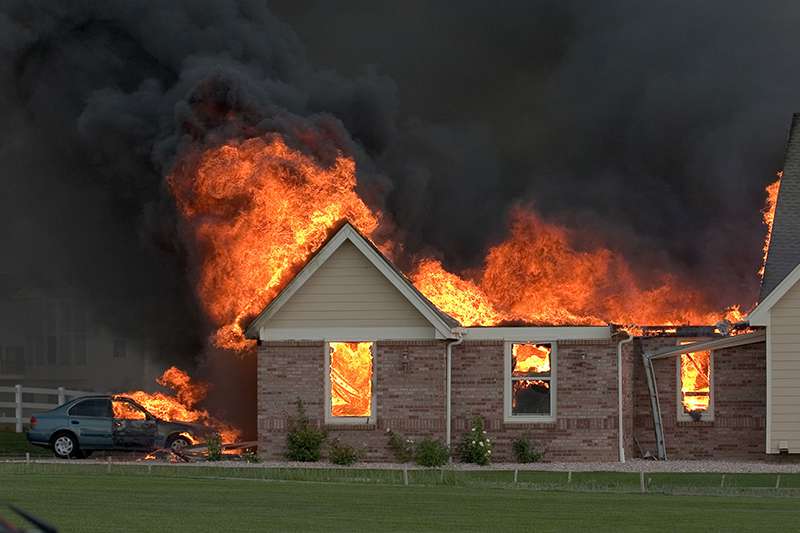
Fire resisting properties of common construction material
Fire resisting properties of common building materials such as stone, brick, timber, cast-iron, glass, steel and concrete are mentioned below.
1. STONE
The stone is a bad conductor of heat. But it suffers appreciably under the effects of fire. The stone is also liable to disintegrate into small pieces when heated and suddenly cooled. Granite explodes and gets easily disintegrated in case of a fire. Limestone is easily crumbled even by ordinary fire. Sandstones of compact composition with fine grains can generally stand moderate fire successfully without the formation of serious cracks.
2. BRICKS
It is found that bricks are not seriously affected until very high temperature of 12000C to 13000 C are reached. This is due to the fact that a brick is a poor conductor of heat. If the type of mortar and quality of workmanship are good, brick masonry generally offers good resistance to fire. However, a brick has its own structural limitation for use in buildings.
3. TIMBER
As a general rule, structural elements made of timber ignite and get rapidly destroyed in case of fire. Further, they add to the intensity of fire. But timber used in heavy sections may attain a high degree of fire-resistance because timber is a very bad conductor of heat. This is the reason why time is required to build up sufficient heat so as to cause a flame in timber. In order to make timber more fire resistant, the surfaces of timber are sometimes coated with certain chemicals such as ammonium phosphate and sulphate, borax and boric acid, zinc chloride, etc. such a treatment on timber surfaces retards the rise of temperature during fire. The timber cam also be made fire-resistant by the application of certain paints on its surface.
4. CAST IRON
This material is rarely used as structural material at present. This material flies into pieces when heated and suddenly cooled. Hence, when this material is used in construction, it is covered either by brickwork of one brick thickness or any other fire resisting material such as concrete.
5. GLASS
This material is a poor conductor of heat and its expansion due to heat is small. Cracks are formed I this material when heated and then suddenly cooled. Reinforced glass with steel wire is ore fire-resistant than ordinary glass and it can resist sudden variation in temperature without the formation of cracks. Wired glass, even if it breaks, keeps the fractured glass in its original position.
6. STEEL
Steel is a good conductor of heat and hence, it is rapidly heated in case of fire. It is found that steel loses its tensile strength with the increase in heat and the yield stress of mild steel at 6000C is about one-third of its value at normal temperature. Hence, under intense fire, the unprotected steel beams sag, the unprotected steel columns buckle and the structure collapses. Steel completely melts at a temperature of 14000C. It is also found that if the surface paint is not specially made fire-resistant, it assists in spreading the flame on the surface and thereby it adds to the intensity of fire.
If steel plate or sheet form is fixed to framework, it becomes affective is resisting the passage of flame. Such construction is widely adopted in manufacturing fire-resisting doors and windows.
7. CONCRETE
Concrete has got very good fire resistance. The actual behaviour of concrete in case of fire depends upon the quality of cement and aggregates used. In case of reinforced concrete and prestressed concrete, it also depends upon the position of steel. Larger the concrete cover, better is the fire resistance of the member.
There is no loss in strength in concrete when it is heated up to 250°C. The reduction in strength starts if the temperature goes beyond 250°C. Normally reinforced concrete structures can resist fire for about one hour at a temperature of 1000°C. Hence cement concrete is ideally used fire resistant material.


